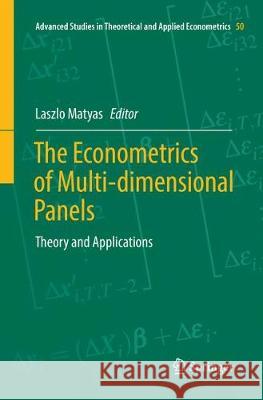The Econometrics of Multi-Dimensional Panels: Theory and Applications » książka
topmenu
The Econometrics of Multi-Dimensional Panels: Theory and Applications
ISBN-13: 9783319869322 / Angielski / Miękka / 2018 / 456 str.
Kategorie:
Kategorie BISAC:
Wydawca:
Springer
Seria wydawnicza:
Język:
Angielski
ISBN-13:
9783319869322
Rok wydania:
2018
Wydanie:
Softcover Repri
Ilość stron:
456
Oprawa:
Miękka
Wolumenów:
01











